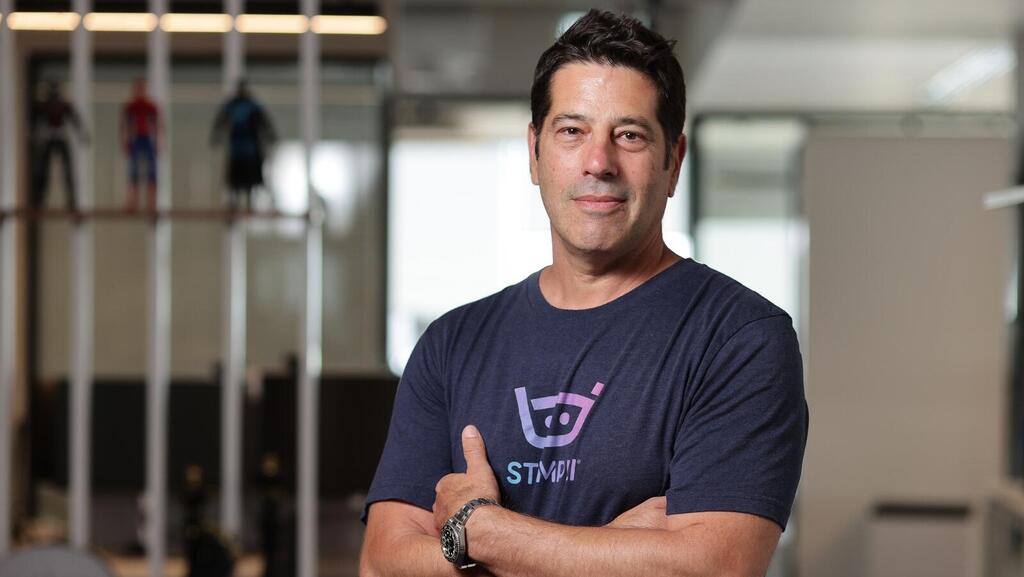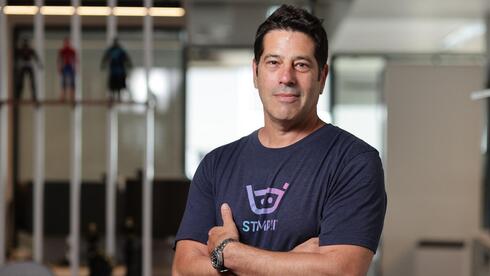
HR in the AI Era
Stampli: “We see AI as a strategic partner that empowers our teams, not a tool that replaces them”
Stampli has fully embraced the AI revolution as a core driver of innovation and scale, says COO Ido Peleg.
“We see AI not as a force that replaces people, but as a tool that empowers them to do their best work and deliver much more than previously thought possible,” said Stampli COO, Ido Peleg, who is also responsible for and manages the HR department and recruitment efforts in Israel.
CTech’s "HR in the AI Era" series explores how the AI revolution is impacting the workforce across Israeli high-tech companies. In this series, we uncover the effects (both personal and professional) that this technology shift has had on Startup Nation.
“In the HR domain, AI is playing a pivotal role as we build and formalize structured processes to support our growing organization,” Peleg added. “This allows our HR team to spend less time on repetitive tasks and focus on what really matters: building culture, improving engagement, and supporting employee growth.”
You can read the entire interview below.
Company name: Stampli
Your name and title: Ido Peleg, Chief Operating Officer, Israel
Names of founders and upper management: Eyal Feldman (CEO) and Ofer Feldman (CTO)
Year of founding: 2015
Investment stage: Series D (Growth)
Total investment to date: Over $148 Million
Field of activity: AI, Fintech
Number of employees: Approximately 300
Office location: Israel and the US
Number of open positions: Approximately 30, mainly in R&D, Product, and Sales
On a scale of 1-10, how much does the AI revolution disrupt your company operation in general, and the HR department specifically?
9
How so?
As a tech company operating in the Procure-to-Pay space, Stampli has fully embraced the AI revolution as a core driver of innovation and scale. AI is integrated across various company processes, including candidate management, internal workflows automation, and monitoring organizational well-being.
In the HR domain, AI is playing a pivotal role as we build and formalize structured processes to support our growing organization. It enhances recruitment by optimizing sourcing and selection through intelligent candidate screening. It also improves the employee experience by streamlining onboarding and enabling continuous, real-time feedback.
What interesting AI tools do you and your staff use in employee management/recruitment?
- Comeet (ATS) and Enterprise ChatGPT for candidate screening, interview scheduling and automated communication.
- Data and analytics tools with Enterprise ChatGPT for trend analysis across the candidate and employee lifecycles.
- Beacon Talent (AI) and LinkedIn for pipeline generation and prioritization.
- LinkedIn Recruiter and Enterprise ChatGPT for optimizing job descriptions and personal messages.
- Zoom and Comeet (ATS) to streamline role intake meetings and automate interview note generation.
- \[Planned\] Slack and Enterprise ChatGPT to build an HR Bot to answer employee questions in real time, and a Hiring Manager Copilot for job descriptions and interview questions.
Related articles:
In which roles or tasks within your company has AI already begun to replace human labor (if at all)?
We see AI as a strategic partner that empowers our teams and increases productivity, efficiency and growth — not a tool that replaces them. In HR, for example, AI helps us streamline sourcing, craft tailored messaging, and match candidates to roles more effectively based on live job data. This allows our HR team to spend less time on repetitive tasks and focus on what really matters: building culture, improving engagement, and supporting employee growth.
What are the two major challenges you are coping with these days?
- Attracting and hiring top-tier talent that aligns with our culture and evolving business needs. We’re focused on recruiting engineers who not only bring technical excellence, but also resonate with our company values and can thrive in a fast-moving startup, in a highly competitive market.
- Strengthening employee engagement while preserving unity in a hybrid, globally distributed context.
Have you experienced workforce-related challenges due to the war, and are you still feeling the impact of the security situation on your human resources?
The ongoing security situation has directly affected our teams – many employees have been called up for reserve duty, while some others are required to support spouses who’ve been mobilized.
These disruptions naturally affected team dynamics and required heightened HR involvement. That said, our organizational agility has allowed us to adapt quickly to the changing reality. We’ve been able to reallocate responsibilities, adjust plans, and maintain business continuity – while supporting our people and staying aligned with our strategic goals.
Have you made changes to your workforce following the increased use of AI tools, both in terms of headcount and internal shifts between departments?
As part of our AI adoption strategy, we’ve taken an organization-wide approach, providing structured training and ongoing guidance to help employees across all departments integrate AI tools into their daily workflows rather than limiting the impact to specific roles. The employees are empowered to lead innovation using these tools.
We encourage a culture of innovation, where teams are encouraged to leverage AI to work faster, decide quicker, and ship features that matter. Our focus is on enabling our people to lead change – not just adapt to it.
How does the global market uncertainty affect your workforce, in terms of employee numbers or departmental reallocations? Are you scaling your workforce up or down in different regions around the world?
In light of global market uncertainty, we’re approaching hiring with greater focus and discipline, prioritizing strategic roles in our key markets. While we haven’t reduced headcount, we have shifted our organizational focus toward internal agility and adaptability. This includes encouraging re-skilling within departments and expanding the use of AI tools across functions. We’ve made and continue to make extensive efforts in this area, for example we’ve been rolling out the most modern AI dev tools (like Copilot, Cursor, ChatGPT Enterprise) to every engineer. Our workforce strategy remains dynamic, and we closely monitor global trends and adjust our plans as needed to ensure long-term resilience and operational efficiency.
Do you estimate that in 2025–2026 you will increase or decrease the number of personnel? Explain why.
We're hiring in core departments aligned with our business priorities with a primary focus on engineering, product management, sales, and customer success, tailored to support our evolving product roadmap. In all departments, we place strong emphasis not only on technical expertise, but also on AI-adoption, adaptability, and the ability to thrive in a fast-paced, collaborative environment.
What is your bottom line on this topic?
At Stampli, we see AI not as a force that replaces people, but as a tool that empowers them to do their best work and deliver much more than previously thought possible. Rather than replacing roles, we harness AI to enhance how teams think, create, and deliver, enabling faster execution, smarter decisions, and more meaningful contributions. This allows us to remain focused on our core vision, building an advanced and super-modern environment that responds to change quickly and consistently delivers reliable, high-impact solutions to our customers.
